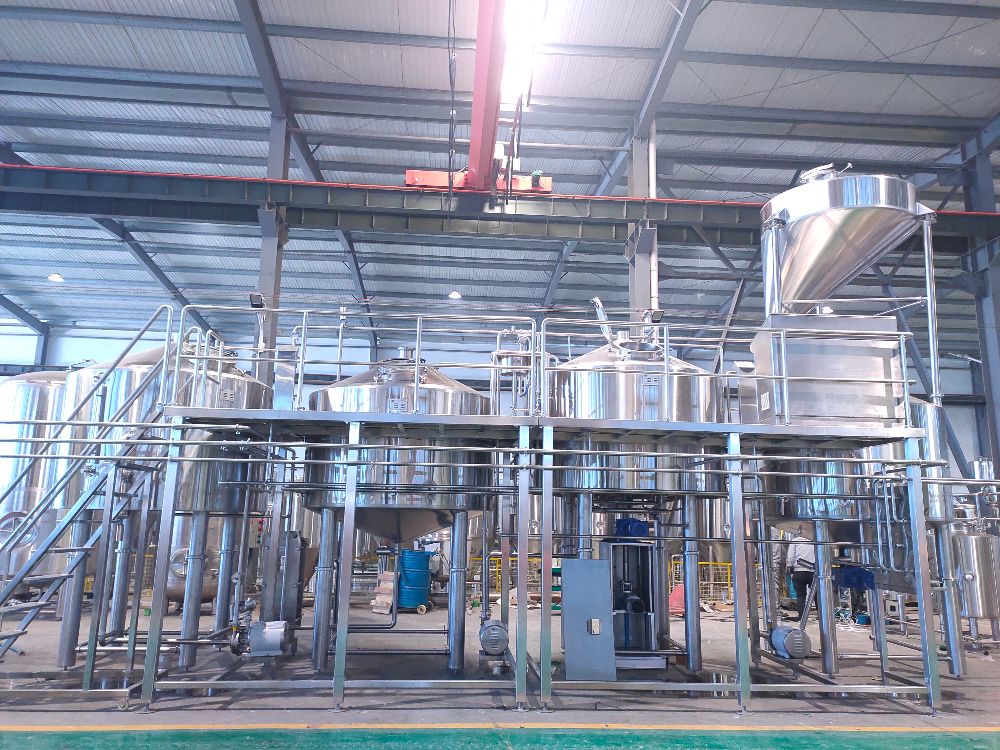Is dry hopping process happened in primary fermentation or secondary fermentation?
- Sep 15, 2023
- 129
- tiantai
In last article, we introduced dry hopping port on beer fermenters and beer type that need do dry hopping. So, dry hopping usually happened in which fermentation process? Primary fermentation or secondary fermentation?
Dry hopping typically occurs during the secondary fermentation or conditioning phase of the brewing process. Here's a brief overview of the primary and secondary fermentation phases:

Primary Fermentation: During primary fermentation, yeast is added to the wort (unfermented beer) to convert sugars into alcohol and carbon dioxide. This phase typically lasts a few days to a week, depending on the beer style and yeast strain used. Primary fermentation is where the majority of the alcohol is produced, and the beer undergoes its initial transformation.
Secondary Fermentation (or Conditioning): After primary fermentation is complete, some brewers choose to transfer the beer to a secondary fermenter, which could be another vessel, such as a carboy or a tank. However, many modern brewers skip this step and leave the beer in the primary fermenter. Secondary fermentation is primarily used for clarification and conditioning. It allows the beer to settle, mature, and develop flavors more fully.
Dry hopping takes place during the secondary fermentation or conditioning phase, whether you transfer the beer to another vessel or leave it in the primary fermenter. By adding hops at this stage, you can extract hop aroma and flavor without the risk of excessive bitterness because the majority of the bitter compounds from the hops are extracted during the initial boiling process.
Dry hopping duration can vary depending on the brewer's preference and the desired hop character but typically ranges from a few days to a couple of weeks. After the dry hopping period is complete, the beer can be packaged (bottled or kegged) for consumption.
In summary, dry hopping is a post-primary fermentation technique used during the secondary fermentation or conditioning phase to enhance the aroma and flavor of the beer with hops.
We can provide complete brewery system and also customize beer fermenters. Welcome to contact me to discuss your brewery project and customize your desired beer fermentation tanks. Cheers!
Nicole Zhou
Sales manager | Tiantai beer equipment
Email: [email protected]
Dry hopping typically occurs during the secondary fermentation or conditioning phase of the brewing process. Here's a brief overview of the primary and secondary fermentation phases:

Primary Fermentation: During primary fermentation, yeast is added to the wort (unfermented beer) to convert sugars into alcohol and carbon dioxide. This phase typically lasts a few days to a week, depending on the beer style and yeast strain used. Primary fermentation is where the majority of the alcohol is produced, and the beer undergoes its initial transformation.
Secondary Fermentation (or Conditioning): After primary fermentation is complete, some brewers choose to transfer the beer to a secondary fermenter, which could be another vessel, such as a carboy or a tank. However, many modern brewers skip this step and leave the beer in the primary fermenter. Secondary fermentation is primarily used for clarification and conditioning. It allows the beer to settle, mature, and develop flavors more fully.
Dry hopping takes place during the secondary fermentation or conditioning phase, whether you transfer the beer to another vessel or leave it in the primary fermenter. By adding hops at this stage, you can extract hop aroma and flavor without the risk of excessive bitterness because the majority of the bitter compounds from the hops are extracted during the initial boiling process.
Dry hopping duration can vary depending on the brewer's preference and the desired hop character but typically ranges from a few days to a couple of weeks. After the dry hopping period is complete, the beer can be packaged (bottled or kegged) for consumption.
In summary, dry hopping is a post-primary fermentation technique used during the secondary fermentation or conditioning phase to enhance the aroma and flavor of the beer with hops.
We can provide complete brewery system and also customize beer fermenters. Welcome to contact me to discuss your brewery project and customize your desired beer fermentation tanks. Cheers!
Nicole Zhou
Sales manager | Tiantai beer equipment
Email: [email protected]

.jpg)


